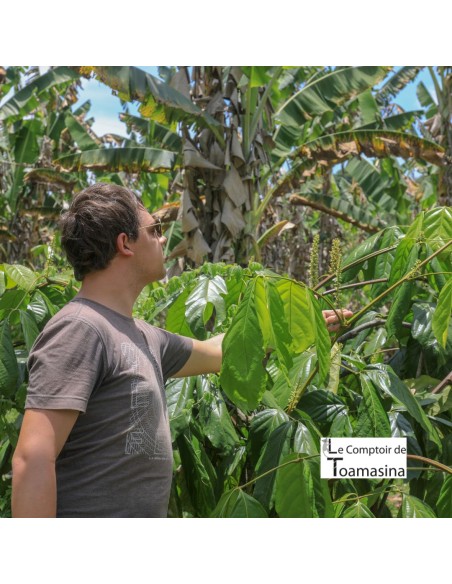In 2018, guarana cultivation in Brazil was concentrated mainly in three states – Bahia, Amazonas and Mato Grosso – which together contributed 93.5% of total production, spread across 70 municipalities . Other regions such as Rondônia, Pará, Acre and Santa Catarina also participated in this production, although in a more limited way.
According to the 2017 IBGE Agricultural Census, Brazil had 6,644 farms growing guarana, with the majority ( 70.3% ) located in Bahia, followed by Amazonas ( 25.6% ) and Mato Grosso ( 0.9% ), with other states forming the remaining 3.2% .
In terms of producer profile in 2017, 88.7% were family farmers, with a significant concentration in Bahia ( 71.1% ), Amazonas ( 24.7% ) and Mato Grosso ( 0.8% ).
For farms with more than fifty guarana plants, 86.4% had an area of less than 50 hectares . Of these, the majority were in Bahia ( 79.5% ), followed by Amazonas ( 17.6% ) and Mato Grosso ( 0.7% ), with the other states representing 2.1% of the total. .
Guarana production decreased slightly in 2018, reaching 2.6 thousand tons , a decrease of 0.7% compared to the previous year. Over the period 2014-2018, the general trend was downward, with an average annual decrease rate of 7.3% .
Bahia maintained its leading position in 2018, with 60% of national production, or 1.5 thousand tons , marking an increase of 3.1% . This growth is attributed to an improvement in productivity of 7.6% , despite a reduction in harvested area of 4.1% .
Between 2014 and 2018, Bahia saw its production decline at an average annual rate of 12.4% . Guarana is grown there mainly in 24 municipalities , including Ituberá, Taperoá and Valença, which produced 63.2% of the state total in 2018.
Amazonas, the second largest producer, contributed 27.7% of national production with 733 tonnes , despite a decline of 14.2% . However, over the period 2014-2018, the state experienced an average annual growth of 4.1% .
Mato Grosso, the third producer, represented 5.8% of national production with 154 tonnes , although its production fell by 14.9% . From 2014 to 2018, production declined at an average annual rate of 8.7% .
The total area dedicated to guarana cultivation was 10.1 thousand hectares in 2018, down 5.2% compared to 2017. The downward trend in harvested area was 2.8% per year between 2014 and 2018.
In 2018, Bahia and Amazonas, which represented 55.2% and 39.5% of the harvested area respectively, saw their area decrease by 4.1% and 8.4% . Over the period 2014-2018, the average annual reduction was 4.4% for Bahia and 0.6% for Amazonas.
Finally, Mato Grosso, with 3.3% of the harvested area, experienced an increase of 6.3% , reaching 339 hectares . However, the area declined at an average annual rate of 8.7% between 2014 and 2018.








